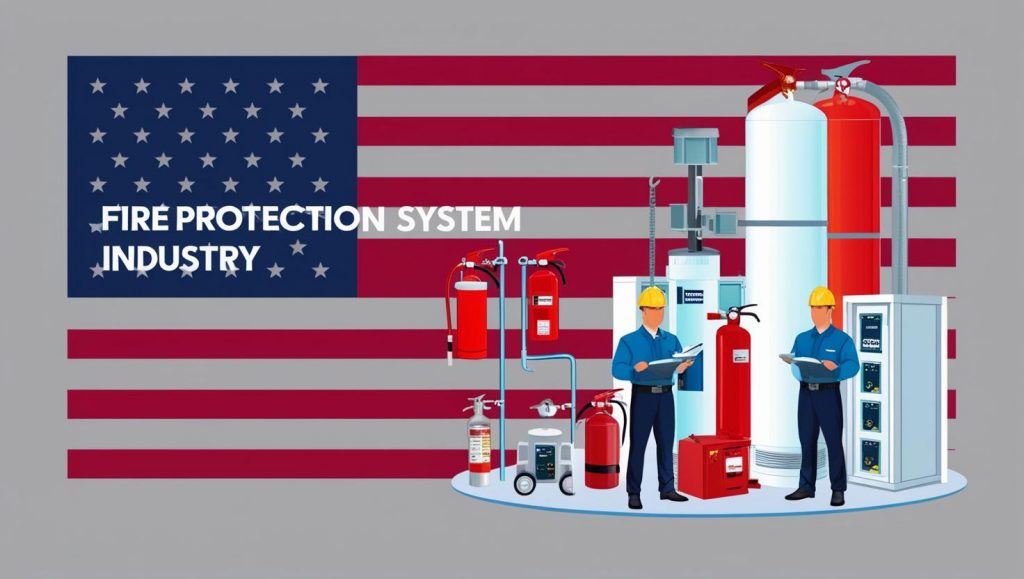The Trump administration’s tariff policies left a notable mark on global supply chains—particularly in industries that rely on imported components and raw materials. Among the affected sectors, the fire protection system market experienced both disruption and evolution. With tariffs impacting steel, aluminum, electronics, and other critical parts used in fire alarms, sprinklers, and suppression systems, the industry was forced to adapt rapidly.
Now, as we move beyond the immediate tariff era, the fire protection market is entering a new phase—defined by innovation, localization, and smarter strategies. What initially appeared as a challenge has started to unveil opportunities for growth, resilience, and transformation.
Tariff Challenges That Triggered Market Rethinking
The fire protection industry depends heavily on international trade for materials and technologies. The Trump-era tariffs increased costs on:
- Steel and aluminum (used in sprinkler pipes, brackets, and structural casings)
- Electronic components (sensors, control units, detectors)
- Imported finished systems and devices
These tariffs not only increased production costs but also delayed projects, squeezed margins, and disrupted previously reliable supply chains. Smaller companies, in particular, struggled to absorb the cost shocks or adapt sourcing strategies overnight.
Book Your “Trump Tariff Threat Assessment”
https://www.marketsandmarkets.com/pdfdownloadNew.asp?id=1018
The Market’s Adaptive Response
Rather than slowing down, the fire protection system market began pivoting with innovation and strategy:
- Reshoring and Domestic Manufacturing
Companies began investing in local production to reduce reliance on tariff-affected imports, taking advantage of government incentives and avoiding future trade volatility. - Supplier Diversification
Firms started sourcing from countries outside tariff zones—like India, Vietnam, and Mexico—creating more resilient, multi-country supply chains. - Smart Technology Investment
The industry saw a surge in IoT-integrated fire protection systems, AI-based fire detection, and cloud-enabled monitoring—value-driven solutions that are less dependent on raw material costs and more aligned with modern safety needs.
Unlocking New Opportunities in a Post-Tariff Era
Growth in Commercial and Industrial Infrastructure
Governments and private sectors continue investing in smart buildings, factories, and logistics hubs—all requiring modern fire protection solutions.
Global Expansion for U.S. Players
With restructured supply chains and enhanced domestic capabilities, U.S. manufacturers are now better positioned to export to regions seeking high-compliance fire safety systems.
Sustainable & Eco-Friendly Systems
There is increasing demand for low-emission suppression agents, energy-efficient detection, and green building certification-compatible fire systems.
Rise in Retrofitting and Maintenance
Aging infrastructure in both developed and developing economies is driving the need for retrofitting existing buildings with up-to-date fire safety technologies.
What Lies Ahead: Strategic Moves for the Future
To capitalize on this new era, companies should:
- Accelerate R&D for smarter systems (AI, wireless tech, integrated alarms)
- Expand local and regional partnerships for manufacturing and distribution
- Offer modular and customizable fire protection systems for diverse use cases
- Strengthen compliance teams to handle multi-region regulatory landscapes
- Adopt flexible pricing strategies that protect margins without deterring customers
The Trump tariffs were a turning point for the fire protection system industry. While they introduced short-term strain, they also sparked long-term transformation. As we enter a post-tariff economy, the industry is poised for accelerated growth—powered by innovation, supply chain agility, and a renewed focus on safety and compliance. Companies that act strategically now can unlock new value and competitive advantage in a market that’s only becoming more essential with time.

